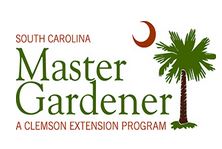257 Reasons Why I Hate Pine Straw!
Well, I lied about the 257 number but that was just to get you to read the rest of this article. I live in an area that has many pine trees and this year’s hot, dry summer has kept a steady dropping of pine straw on my roof and garden. Strangers stop their cars and take pictures of my home which resembles a thatched hut in a Hansel and Gretel fairy tale. Some of the other pine straw complaints include clogging gutters, sticking your bare feet, piercing plant leaves and making a mess on the back porch. The biggest reason that I live with it, is that it makes a great mulch and at five to seven dollars a bale, I’ll put up with a few pine needles in my toes.
It is true that the best pine straw in Aiken is on my roof but getting it off is another issue. Every year, there are people who stop and ask if they can have the pine straw if they clean it off of the roof. I usually refuse. Pine straw on an asphalt shingled roof is equivalent to a D23 ski slope in the Rocky Mountains. If you slip, I estimate that you can be in the azaleas in 1.8 seconds. I leave roof cleaning to the insured professionals.
Now, back to the mulch discussion. There is little argument that pine straw makes a great mulch. Clean, fresh straw can dress a flower bed with an attractive color while providing protection from weeds and retaining valuable moisture. But what about all the drawbacks to using pine straw? Well, what about them? Most complaints are in the “Old Wives’ Tales” category and have no foundation in truth. Let’s look at some.
- Pine straw is acidic and will rot your flower bed. Not true! While fresh “green” straw may be acidic, this is not the material that we use in flower beds. Green straw will quickly dry and change to an almost neutral pH.
- You can’t put new pine straw over old. Sure you can! If you put 3”-4” down last year, it has probably flattened out and started to decay. Simply add another 2”-3” to dress up the bed and you should be good for another year.
- Pine straw will cause disease and spread to my plants. Pine straw will not cause a disease. Diseases of plants and turf will settle in any ground material and spread as conditions allow. Pine straw, in itself, does not produce disease. Keep any mulch a few inches away from the base or stems of plants and trees.
Let’s look at some of pine straw’s advantages.
- It’s attractive and adds color to the landscape. In a short time you can improve the appearance of your beds and protect them as well.
- It won’t blow away as easily as some mulches. Pine straw is long and it intertwines with itself.
- It’s inexpensive, especially if you can harvest it from your own trees.
- It breaks down slowly and adds nitrogen to the soil. Anything that adds organic material to our sandy soils is a good thing. Thank you Martha!
- It holds moisture, prevents weeds from germinating and lasts a long time!
There are many more reasons to use our abundant pine straw in the garden and you can find this information on the Clemson website at http://www.clemson.edu/extension/hgic/. Just type “pine straw” into the search bar.
If you missed applying a pre-emergent herbicide for winter weeds in September, all is not lost. That application was for grassy weeds and wild onion and garlic. A new crop of weeds is about to germinate. Chickweed, henbit, Carolina geranium and some clovers are waiting to annoy you. Apply the pre-emergence weed killer around the middle of December and water it in well. Try to time your application with a normal rain.
In our next column, we will be telling you about the new Aiken Master Gardener Gardening Almanac. This is a publication that has been around since 2004 and is written strictly for Aiken and vicinity. The new issue has been completely revised and will be available in early January.

